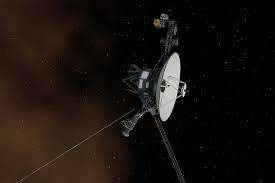NASA's Voyager Spacecraft: Roaming Billions of Miles but Not Yet at the 'Edge'
Since their launch in 1977, NASA's Voyager spacecraft—Voyager 1 and Voyager 2—have become iconic symbols of human exploration. Both spacecraft have traveled farther from Earth than any other man-made objects, covering billions of miles through the vastness of space. Despite their remarkable journeys, they have not yet reached what many consider the "edge" of our solar system, a point that defines the boundary between the solar system and interstellar space.
The Voyager Mission
Launched in a unique alignment of the outer planets, Voyager 1 and Voyager 2 were designed primarily for flybys of Jupiter and Saturn. Their missions were later extended to explore Uranus and Neptune, making Voyager 2 the only spacecraft to have visited these two ice giants. The primary scientific objectives included studying planetary atmospheres, magnetic fields, and the intricate details of their moons and rings.
However, the mission's legacy extends beyond these planets. After completing their primary missions, both spacecraft continued to send back data as they traversed the heliosphere, the vast bubble of solar wind and magnetic fields created by the Sun. Voyager 1, in particular, made headlines in 2012 when it became the first human-made object to enter interstellar space, crossing what is known as the heliopause—the boundary where the solar wind from the Sun meets the interstellar medium.
Defining the 'Edge'
The term "edge" of the solar system is often misunderstood. The heliopause, which Voyager 1 crossed, marks the transition from the Sun's influence to the surrounding interstellar medium. However, this boundary is not a fixed point; it fluctuates due to solar activity and the density of interstellar particles.
Moreover, the solar system itself is defined not only by the influence of the Sun but also by the gravitational pull of its planets and other celestial bodies. The Oort Cloud, a theoretical region of icy bodies that exists far beyond the planets, is often considered the true boundary of our solar system. Estimates suggest that this distant cloud could extend up to a light-year away from the Sun, far beyond where Voyager 1 and 2 currently are.
Current Status of the Voyagers
As of 2024, Voyager 1 is over 14 billion miles away from Earth, while Voyager 2 follows closely behind at around 12 billion miles. Both spacecraft continue to transmit valuable data back to Earth, including measurements of cosmic rays, magnetic fields, and plasma waves from the interstellar medium. The scientific community eagerly analyzes this data to gain insights into the nature of space beyond our solar system.
Despite their immense distances, the Voyagers face challenges. Each spacecraft is powered by radioisotope thermoelectric generators, which convert heat from radioactive decay into electricity. As the plutonium fuel decays, the power available for onboard instruments and communication decreases. Engineers at NASA are carefully managing the power to extend the missions as long as possible, selectively turning off non-essential instruments to conserve energy.
The Search for Interstellar Insights
The data from Voyager 1 and Voyager 2 has provided unprecedented insights into the nature of interstellar space. Voyager 1, for instance, has detected a decrease in solar particle radiation and an increase in cosmic rays, suggesting that it is indeed in an environment dominated by interstellar matter. This information helps scientists understand the broader dynamics of our galaxy and the conditions that may be present around other stars.
Researchers are also excited about the potential discoveries that lie ahead. The interstellar medium is a treasure trove of information about the history of our solar system and the processes that govern stellar formation. As the Voyagers continue to send back data, they may reveal clues about the formation and evolution of planetary systems, including our own.
Conclusion
NASA's Voyager spacecraft have roamed billions of miles and achieved extraordinary milestones in space exploration. While they may not have reached what many consider the definitive "edge" of our solar system, their journey has significantly expanded our understanding of the cosmos. The continued transmission of data from these pioneering machines ensures that their legacy will endure, shedding light on the mysteries of interstellar space and inspiring future generations of explorers to reach even further into the unknown. As we reflect on their achievements, we are reminded of the relentless human spirit of discovery, always pushing the boundaries of what we know about our universe.


